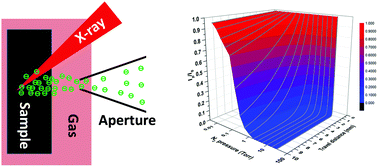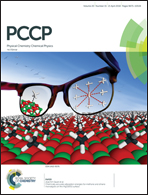Interactions of gaseous molecules with X-ray photons and photoelectrons in AP-XPS study of solid surface in gas phase
Abstract
Studies of the surface of a catalyst in the gas phase via photoelectron spectroscopy is an important approach to establish a correlation between the surface of a catalyst under reaction conditions or during catalysis and its corresponding catalytic performance. Unlike the well understood interactions between photoelectrons and the atomic layers of a surface in ultrahigh vacuum (UHV) and the well-developed method of quantitative analysis of a solid surface in UHV, a fundamental understanding of the interactions between X-ray photons and gaseous molecules and between photoelectrons and molecules of the gas phase in ambient pressure X-ray photoelectron spectroscopy (AP-XPS) is lacking. Through well designed experiments, here the impact of the interactions between photoelectrons and gaseous molecules and interactions between X-ray photons and gaseous molecules on the intensity of the collected photoelectrons have been explored. How the changes in photoelectron intensity resulting from these interactions influence measurement of the authentic atomic ratio of element M to A of a solid surface has been discussed herein, and methods to correct the measured nominal atomic ratio of two elements of a solid surface upon travelling through a gas phase to its authentic atomic ratio have been developed.

- This article is part of the themed collection: 2018 PCCP HOT Articles


 Please wait while we load your content...
Please wait while we load your content...